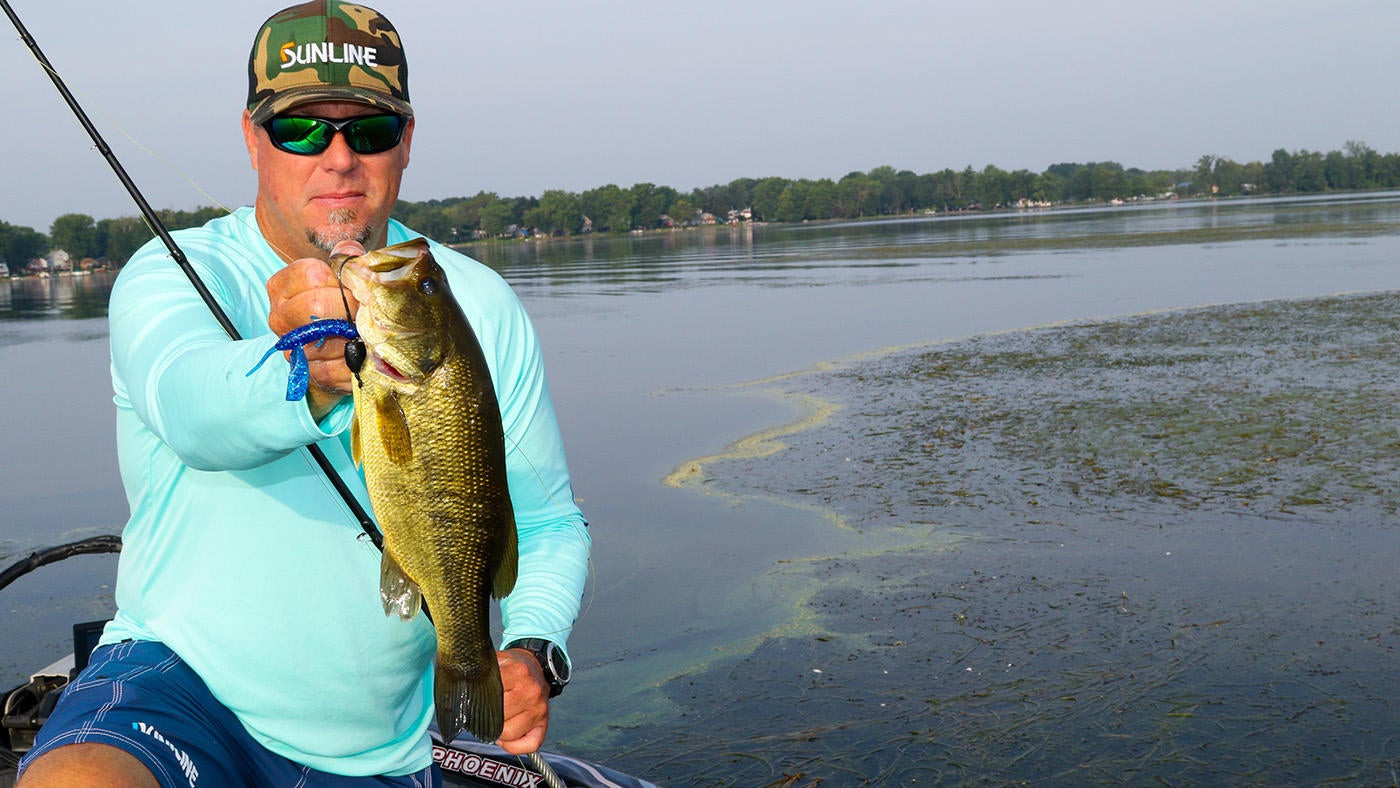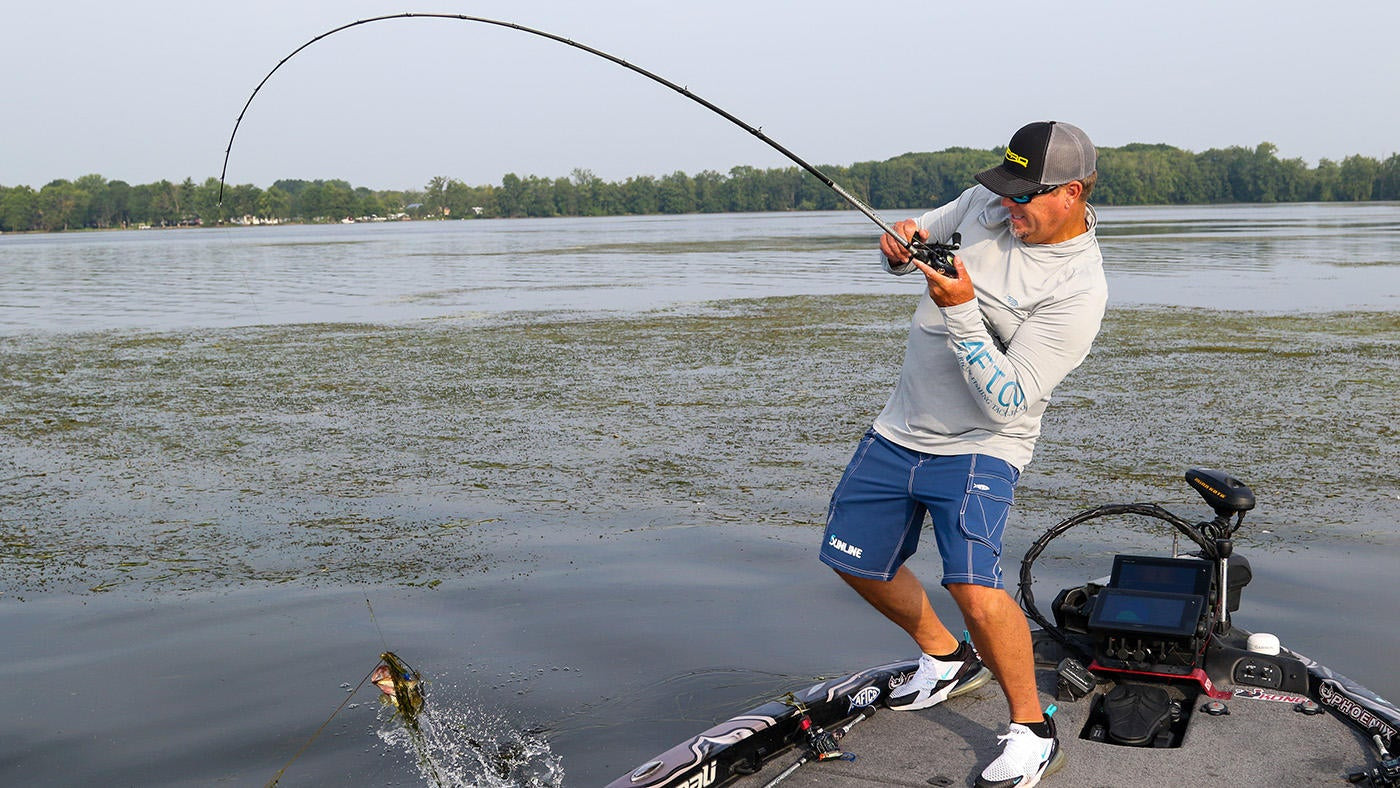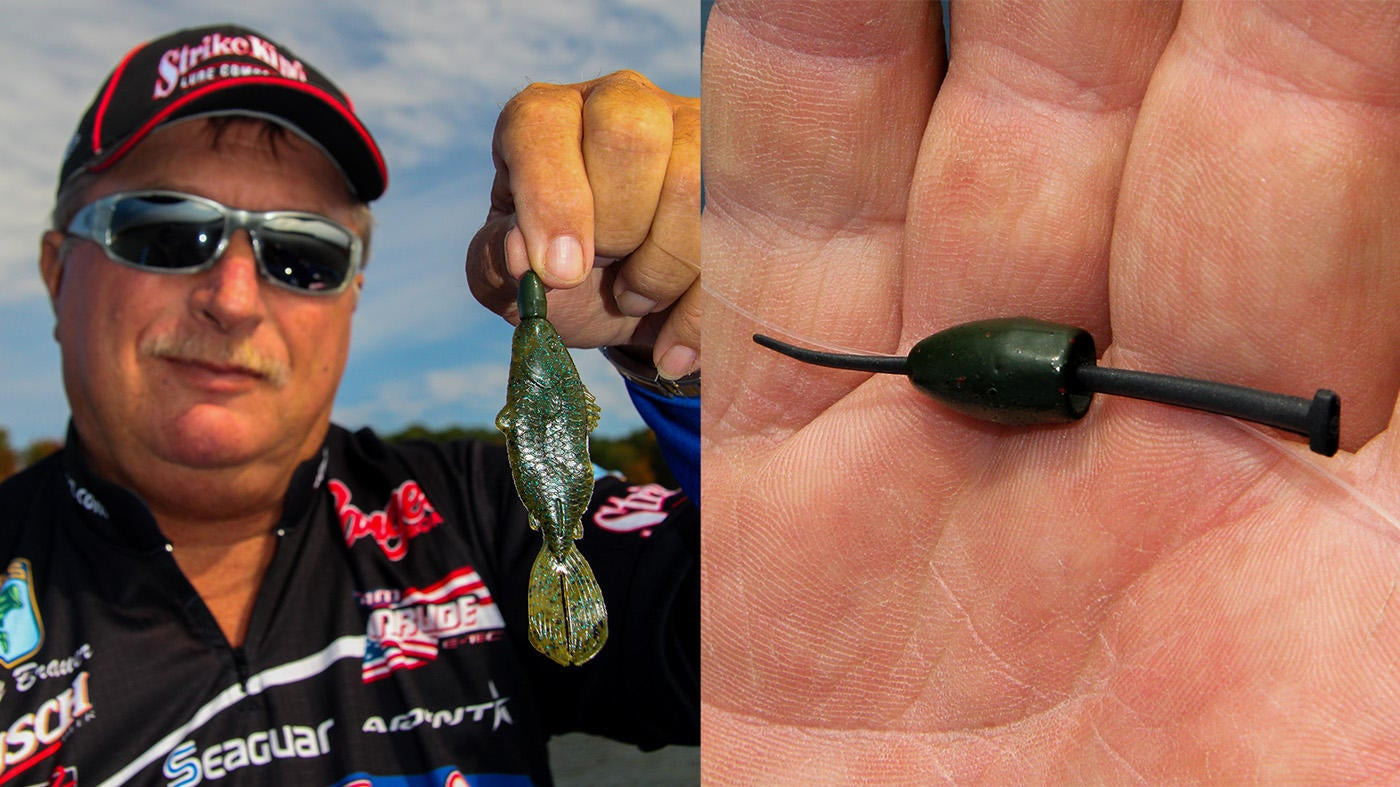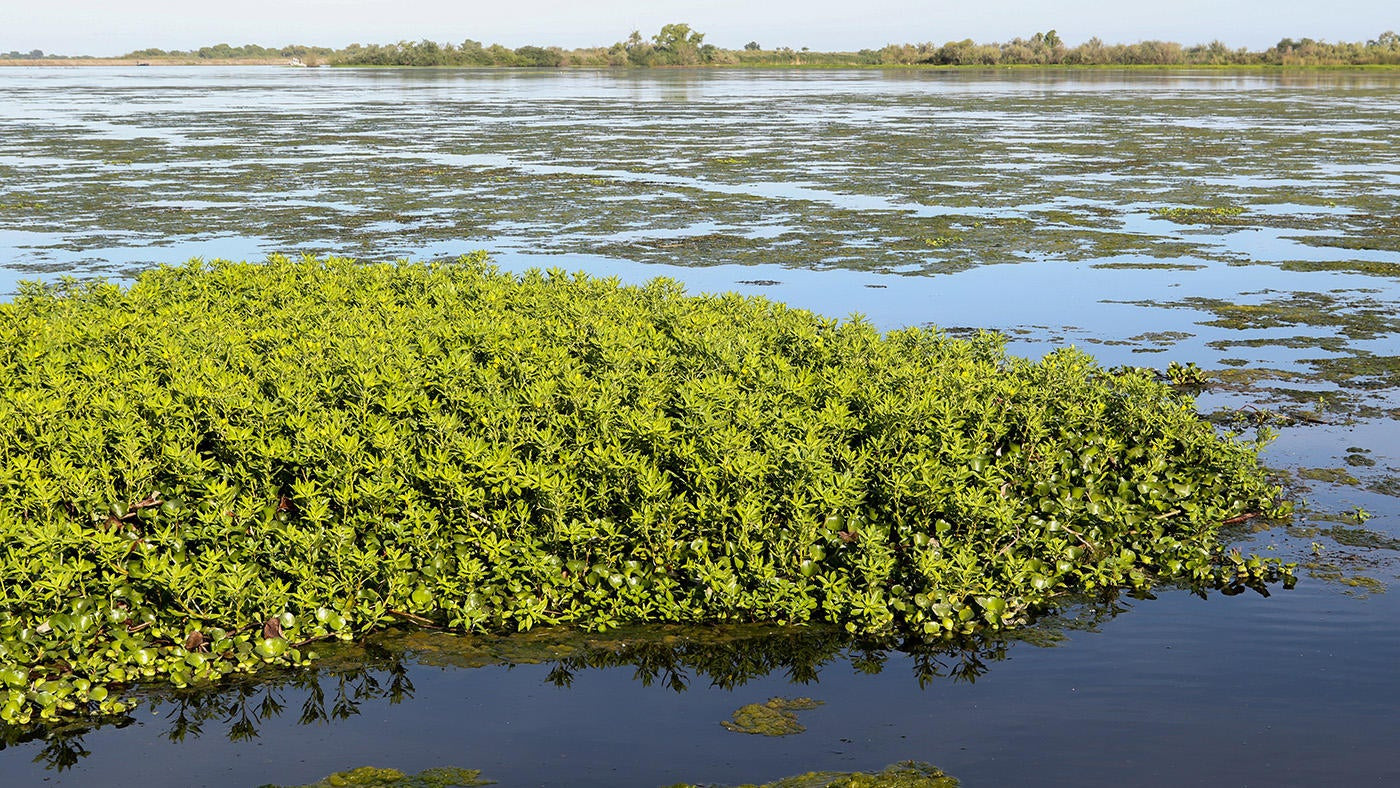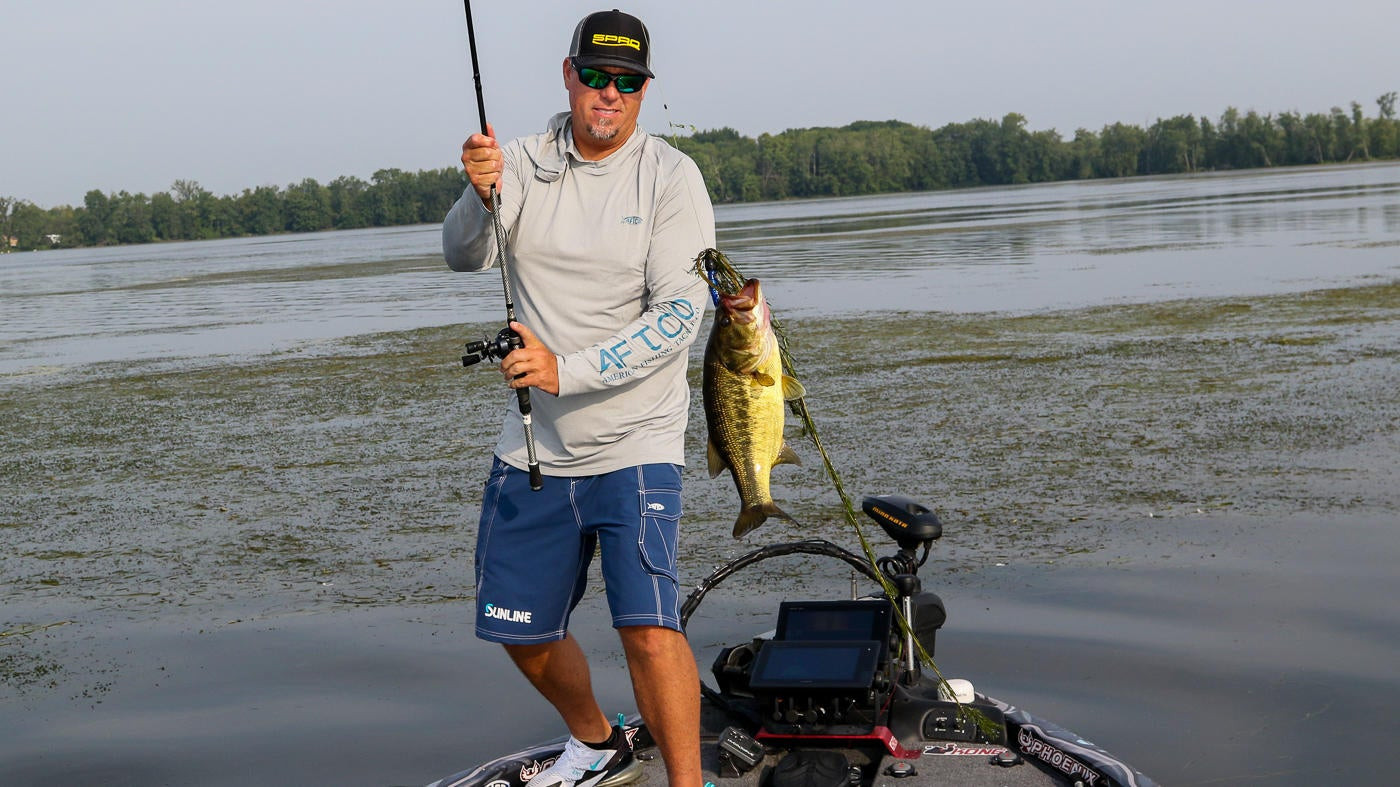Punching baits through thick cover for bass is the epitome of “outta sight, outta mind.” You drive a heavily weighted soft plastic through a canopy of vegetation and a fish grabs it. Sometimes, it’s literally that simple, but consistency follows attention to detail and strategy.
Alabama pro Russ Lane is highly competent with a big flipping stick in his hand. Punching’s one of his go-to techniques, so he shared his insights on optimizing the outcome.
Streamline Your Baits
Creature/beaver style baits are most common, but relying on a single size/shape will limit your game. Notably, varying colors often proves more effective than rotating through multiple bait shapes; and to this point, Lane keeps it simple with two situational baits.
“If we have stable weather and the fish are really biting, then I’ll use a Big Bite Baits Yomama,” Lane said. “It’s a little over 4-inches, it’s a wider bait that presents the big profile they want.”
Nice when big-and-bold does the trick, but the tougher scenarios call for a strategic change. Whether it’s post-frontal conditions, heavy fishing pressure or some of both, Lane knows that subtle is better.
“I’ll always start off flipping matted grass with a small bait because I know that, at some point, those fish are going to get under the thickest, tightest cover possible,” Lane said. “I use the 3-inch Big Bite Baits Yodaddy craw, which is designed just for that — punching heavy surface mats.”
Favoring the bait’s streamlined form, Lane rigs his Yodaddy with a 3/0-5/0 Gamakatsu straight shank hook, based on weight size.
“If I’m punching with a 1 ounce weight or lighter, I’ll usually use a 3/0 or 4/0,” Lane said. “But if I got to a 1 14- or 1 1/2-ounce weight, I’ll use the 5/0 because that gives me more bite to get around that weight.”
When Bulk it Better
For those bigger presentations, Lane bolsters the appearance with a homemade punch skirt. He buys the hubs online and ties in his preferred color blend and density of fine cut silicone strands.
“You’re adding more visual appeal and the hub rattles against the weight when you’re shaking the rod tip,” he said.
Lane typically foregoes a punch skirt in super thick mats, as the extra drag slows the penetration. However, during post-frontal, he’ll add a punch skirt and trim the strands close for a short, bristly profile. The idea here, is to present that finesse collar look while retaining the enticing sound of that clicking hub.
And speaking of movement, Lane pegs his sinker with one or two bobber stops, but he places them about an inch above the tungsten weight. When a fish thrashes, this gap allows the weight to slide up the line enough to minimize its hook popping potential.
Get Centered on Your Weight
Flipping legend Denny Brauer offers this tip for punch weights: With a Strike King tungsten weight slid onto his line, he’ll push a rubber pegging nail through the weight (bottom to top), snip off the broad end even with the weight’s bottom, pull the nail into the weight’s upper half and trim the topside excess.
Without a full nail pinching his line against the weight’s interior, this setup allows the line to remain centered below the weight for ideal presentation.
Don’t Overlook Oddball Targets
In addition to traditional grass mats, pads and hyacinth, don’t overlook rafts of dead reeds or tules. Also, Lane points to to the piles of leaves, pine straws and debris that gathers in the backs of pockets during winter pool and when rising water piles debris in pockets. As spring water levels rise, all that junk rises to create one sleeper of a punching opportunity.
“If you can find some of these ‘saw dust mats’ with a little ditch at least a foot or more deep, you can punch them,” Lane said. “You can catch them really shallow and they may be in all three stages of the spawn.”


